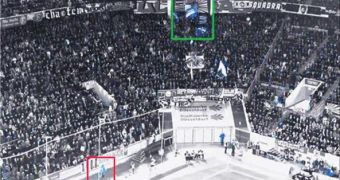A team of experts announces the development of a new camera-based security system, that could help augment public security in very crowded places, such as airport terminals or stadiums.
The innovative approach could also be used inside office buildings or other sensitive locations, its creators say. The device is called Smart Eyes.
What sets this system apart from all other approaches to video surveillance is the fact that it actually functions like a human eye, in the sense that it can analyze recorded data in real-time.
The human brain does the same with the video feed from our eyes. The electrical signals from the retina are sent to the visual cortex, where a host of processes take place virtually instantly.
When we see something, we automatically classify it into a host of categories, sometimes without even realizing. For instance, you may see a cup, which is a tool for drinking water, but it is also red, made of clay, smaller than another cup, prettier than the one at home, and so on.
What Smart Eyes does is very similar. It can browse through live video feeds collected by security cameras, and then identify salient features and unusual scenes, AlphaGalileo reports.
The flagged content is then relayed via monitors to security personnel, which can proceed to defuse the situation. The new system was developed by experts from the Fraunhofer Institute for Applied Information Technology FIT, in Sankt Augustin, Germany.
The device is part of a project supported by the European Union, which is called “SEARISE – Smart Eyes: Attending and Recognizing Instances of Salient Events.”
One of the most remarkable features the new security system has is that it can separate objects of interest from a crowded, noisy background just like a human can.
For example, in the midst of stadium frenzy, when a team scores and the fans are ecstatic, we can still watch a fight going on in certain area of the stadium, regardless of the racket around.
For computer programs, doing the same is incredibly complex, but the Smart Eyes research group may have nailed it.
“That is invaluable for video surveillance of public buildings or places. In certain circumstances the capabilities of a human observer are limited,” says FIT team member Dr Martina Kolesnik.
In the stadium scenario above, security personnel cannot possibly keep an eye on everyone, and prevent brawls between fans from taking place.
“Ask someone to keep an eye on a certain stand in a football stadium and they are bound to miss many details. That same person can only carefully monitor certain sections of the whole area and will quickly get tired. That‘s where Smart Eyes clearly comes into its own,” Kolesnik concludes.

 14 DAY TRIAL //
14 DAY TRIAL //